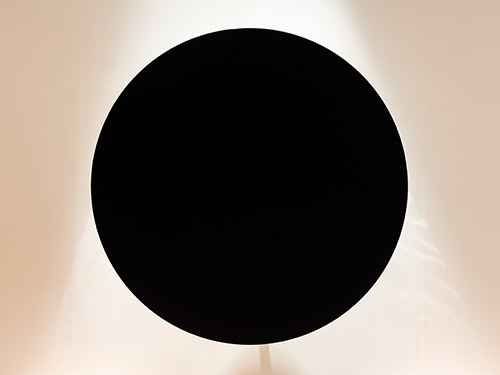

The Void


Nothingness and the Void are concepts that appear in the Eastern philosophies that influenced Minimalism, but they are also important ideas in science. The vacuum and the void are central features of physics, which have helped shape our understanding of reality. The emptiness that permeates the universe, and the structure of atoms, has long given artists and scientists pause for thought. Whilst quantum mechanics teaches us that empty space in nature is never truly empty, undulating as it is with vacuum fluctuations and invisible quantum fields, it is still extraordinary to ponder the sheer sparsity of the cosmos.
These ideas, that bridge philosophy and science, fascinated Minimalist artists, inspiring many to find ways of representing the Void. Artists today are able to collaborate with scientists to create work that not only presents a void, but also gives the viewer the closest possible experience of what true ‘nothingness’ might be.
.jpg)

Horizontal Depth³ — “This Is Not the Place We Go to Die. It’s Where We Are Born” by Frederik De Wilde (2018)
Stainless steel, carbon nanotubes, polymer, LEDs and electronics, 190 cm (diameter)
New commission
Frederik De Wilde works at the intersection of art, science and technology. In 2010, he engineered a new colour believed to be the blackest black in the world. Working with closely with NASA scientists, De Wilde grew his ‘blackest black’ material inside a nanotechnology laboratory. He used it to create a number of black paintings which directly refer to Russian artist Kazimir Malevich’s iconic 1915 painting, Black Square, which is widely regarded as one of the most important precursors to Minimalism.
Echoing the circular form of the ensō explored elsewhere in the exhibition, and visually evocative of a black hole, this newly commissioned work uses De Wilde’s material to create an encounter with the Void, an idea that resonates in Minimalist art, Eastern philosophy and science. The carbon nanotubes used to make the artwork are comprised of 99.99% air and 0.01% carbon and capture light at all frequencies. When gazing at this artwork viewers are literally looking into nothing – a void space – and the closest approximation of emptiness that is possible to experience on the Earth.
In the same way that Malevich hoped that his Black Square painting would free art of the obligation to depict the real, De Wilde intends his work to open up a space of imagination for the viewer. As he notes, “it is the ultimate celebration of the unknown.”